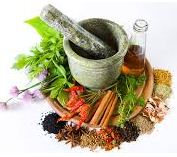A didactic guide of Natural and Traditional Medicine for the teaching of Microbiology and Medical Parasitology
Keywords:
, COMPLEMENTARY THERAPIES, TEACHING, MEDICAL EDUCATION.Abstract
Introduction: a pedagogical research was carried out in the teaching-learning process of Natural and Traditional Medicine , into the subject of Microbiology and Medical Parasitology of medicine studies at Ernesto Guevara de la Serna School of Medical Sciences, Pinar del Río, during the 2016-2017 academic year. This process presents insufficiencies in its implementation..
Objective: to design a didactic guide that contributes to the improvement of the teaching-learning process on the subject of Natural and Traditional Medicine, taking into account the performance of the professionals.
Methods: the theoretical methods used were: historical-logical in the bibliographic review and systemic-structural in the analysis of the didactic components of the guide; empirical methods such as the documentary review and data collection, as well as surveys of students and professors; besides interviews with key informers to corroborate the existence of the problem. The criteria of the experts were used to validate the scientific product.
Results: considering the regularities found with the instruments applied during the research and the triangulation of them, a didactic guide was approved, which contains the information that professors need to teach the Natural and Traditional Medicine contents.
Conclusions: the Didactic Guide designed allows the increase in the quality of the teaching-learning process according to the demands of the professional model, making possible that the students to gain knowledge concerning the application of Natural and Traditional Medicine in the different contents of Microbiology and Parasitology. This was positively validated by the criteria of experts.
Downloads
References
1. MINSAP, Resolución Ministerial No. 381 de 2015 [Internet]. Gaceta oficial No. 17 Extraordinaria de 20 de mayo de 2015. Disponible en: http://www.juventudtecnica.cu/sites/default/files/materiales%20periodisticos/GO_X_17_2015.pdf.
2. Estándares globales de la WMFE para la mejora de la calidad. Educación Médica [Internet] 2004; 7(2). Disponible en: http://scielo.isciii.es/pdf/edu/v7s2/original1.pdf.
3. Asamblea Nacional del Poder Popular. Actualización de los Lineamientos de la Política Económica y Social del Partido y la Revolución para el periodo 2016-2021 [internet]. Julio2016 [citado 2017 jun 1]. Disponible en: http://www.granma.cu/file/pdf/gaceta/01Folleto.Lineamientos-4.pdf.
4. Pita Laborí LY, Tabera García ME, Matos Cantillo D, Thomas Ferrer F, Thomas Ferrer A. Beneficios, contraindicaciones y precauciones de la Medicina Natural y Tradicional como respuesta a los problemas de salud. RevInfCient [Internet]. 2017 [citado 2017 oct 30]; 96 (2):314-24. Disponible en: http://www.revinfcientifica.sld.cu/index.php/ric/article/view/17/1034.
5. Rodríguez de la Rosa G, Pino García A, Seoane Pérez N. La medicina tradicional y natural camagüeyana: logros y deficiencias. AMC [Internet]. 2015 [citado 2017 oct 30]; 19(3). Disponible en: http://scielo.sld.cu/scielo.php?script=sci_arttext&pid=S1025-02552015000300013.
6. Rodríguez de la Rosa G, Pino García A. El método clínico en Medicina Tradicional y Natural. AMC [Internet]. 2015 mayo [citado 2017 oct 30]; 19(3). Disponible en: http://scielo.sld.cu/scielo.php?script=sci_arttext&pid=S1025-02552015000500013.
7. Rousseau Yera R, Fuentes Martínez CM. Las relaciones interdisciplinarias entre la Educación Física y la Medicina Natural y Tradicional. PODIUM [Internet]. 2017 ene [citado 2017 oct 30]; 12(1):52-8. Disponible en: http://podium.upr.edu.cu/index.php/podium/article/view/691/704.
8. Báez Pérez OL, Díaz Domínguez TC, Márquez Marrero JL, Acosta Morales ML. Regularidades del proceso formativo en Medicina Tradicional y Natural. Carrera de Medicina. Pinar del Río. Rev. Ciencias Médicas [Internet]. 2013 Abr [citado 2017 mayo 02]; 17(2): 149-58. Disponible en: http://scielo.sld.cu/scielo.php?script=sci_arttext&pid=S1561-31942013000200014&lng=es.
9. Ministerio de Salud Pública. Universidad de Ciencias Médicas de la Habana. Comisión Nacional de Carrera. Plan de estudio “D”. Carrera de Medicina. La Habana: MINSAP; 2016.
10. Salas Perea RS, Díaz Hernández L, Pérez Hoz G. Identificación y diseño de las competencias laborales en el Sistema Nacional de Salud. Educación Médica Superior [Internet]. 2013 Mar [citado 2017 Mar 22]; 27(1): 92-102. Disponible en: http://scielo.sld.cu/scielo.php?script=sci_arttext&pid=S0864-21412013000100012&lng=es.
11. Comisión Nacional De Carrera De Medicina. Fondo de Tiempo presencial CRD. Universidad de La Habana; 2017.
12. Ministerio de Salud Pública. Comisión Nacional de Carrera de Medicina. Estrategia Curricular De Medicina Tradicional y Natural. Universidad de Ciencias Médicas de La Habana:MINSAP; 2015.
13. Comisión Nacional De Carrera de Medicina. Plan De Estudio “D”. Carrera De Medicina. Indicaciones Metodológicas y de Organización. Universidad de Ciencias Médicas de La Habana; 2015. p.8-9.
14. Franco Pérez PM. Elaboración de la pregunta sobre Medicina Natural y Tradicional en exámenes estatales: reclamo de calidad. EDUMECENTRO [internet]. 2016 [citado 2017 oct. 8];8(1). Disponible en: http://scielo.sld.cu/scielo.php?script=sci_arttext&pid=S2077-28742016000500003
15. Mateo Mejía LG. La guía didáctica: práctica de base en el proceso de enseñanza-aprendizaje y en la gestión del conocimiento. Revista Apertura [Internet]. 2013 [citado 2017 Feb. 2];5(1):[aprox. 13 p.]. Disponible en: http://www.udgvirtual.udg.mx/apertura/index.php/apertura/article/view/366/306.
16. Hernández García SH. Opciones terapéuticas de medicina bioenergética natural en Pediatría. Buenos Aires. Editorial académica española; 2016. p.1-23.

Published
How to Cite
Issue
Section
License
Authors who have publications with this journal agree to the following terms: Authors will retain their copyrights and grant the journal the right of first publication of their work, which will be publication of their work, which will be simultaneously subject to the Creative Commons Attribution License (CC-BY-NC 4.0) that allows third parties to share the work as long as its author and first publication in this journal are indicated.
Authors may adopt other non-exclusive license agreements for distribution of the published version of the work (e.g.: deposit it in an institutional telematic archive or publish it in a volume). Likewise, and according to the recommendations of the Medical Sciences Editorial (ECIMED), authors must declare in each article their contribution according to the CRediT taxonomy (contributor roles). This taxonomy includes 14 roles, which can be used to represent the tasks typically performed by contributors in scientific academic production. It should be consulted in monograph) whenever initial publication in this journal is indicated. Authors are allowed and encouraged to disseminate their work through the Internet (e.g., in institutional telematic archives or on their web page) before and during the submission process, which may produce interesting exchanges and increase citations of the published work. (See The effect of open access). https://casrai.org/credit/


